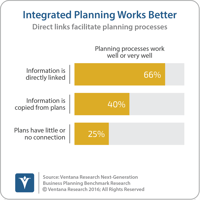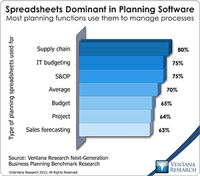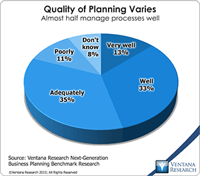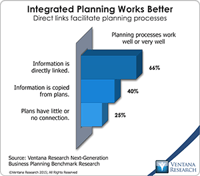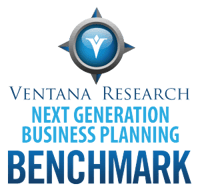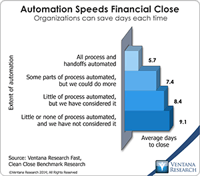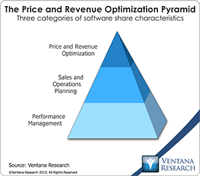Smart manufacturing is a strategic operating approach that aligns advanced manufacturing technology with system and process design principles to promote adaptability. It is a digital, event-driven, collaborative orchestration of physical and digital processes designed to increase productivity, efficiency, adaptability and resilience. These systems use technologies to coordinate the planning and execution of even disparate operations within factories and across an entire manufacturing supply...
Read More
Topics:
Continuous Planning,
S&OP,
Operations & Supply Chain,
supply chain management,
Manufacturing,
Continuous Supply Chain & ERP,
Smart Manufacturing
From my perspective, supply chain management (SCM) and sales and operations planning (S&OP) are two of the most underappreciated disciplines of modern corporate management. Properly applied, they can improve performance and competitiveness by increasing customer satisfaction and reducing costs. A combination of more capable information technology with advances in operations research and analytics has made managing supply and demand chains potentially more impactful by making them more flexible...
Read More
Topics:
ERP,
Kinaxis,
Supply Chain Planning,
Analytics,
SCM,
S&OP,
Sales and Operations Planning,
warehouse management,
purchasing,
inventory management
Supply and demand chain planning and execution have grown in importance over the past decade as companies have recognized that software can meaningfully enhance their competitiveness and improve their financial performance. Sales and operations planning (S&OP) is an integrated business management process first developed in the 1980s aimed at achieving better alignment and synchronization between the supply chain, production and sales functions. A properly implemented S&OP process routinely...
Read More
Topics:
Planning,
SaaS,
Sales,
Sales Performance,
Supply Chain Performance,
Forecast,
Human Capital,
Mobile Technology,
Supply Chain Planning,
Operational Performance,
Analytics,
Business Analytics,
Business Collaboration,
Business Performance,
Cloud Computing,
Financial Performance,
Sales Performance Management (SPM),
Sales Planning,
Supply Chain,
Demand Chain,
Integrated Business Planning,
SCM Demand Planning,
S&OP
It’s stating the obvious to say that how well executives manage planning processes has a big impact on how well a business unit or company plans. However, one significant source of the value of our benchmark research is that it establishes hard evidence – the numbers – that transforms mere assertions into proof points. This is particularly important when people within an organization want to improve a process. Change management is facilitated by providing senior executives with facts to back up...
Read More
Topics:
Big Data,
Predictive Analytics,
Sales,
Sales Performance,
Supply Chain Performance,
Marketing,
Customer Performance,
Operational Performance,
Business Analytics,
Business Performance,
Cloud Computing,
Financial Performance,
Supply Chain,
S&OP
Ventana Research recently released the results of our Next-Generation Business Planning benchmark research. Business planning encompasses all of the forward-looking activities in which companies routinely engage. The research examined 11 of the most common types of enterprise planning: capital, demand, marketing, project, sales and operations, strategic, supply chain and workforce planning, as well as sales forecasting and corporate and IT budgeting. We also aggregated the results to draw...
Read More
Topics:
Big Data,
Planning,
Predictive Analytics,
Sales,
Sales Performance,
Social Media,
Supply Chain Performance,
Human Capital Management,
Marketing,
Office of Finance,
Reporting,
Budgeting,
Controller,
Customer Performance,
Operational Performance,
Business Analytics,
Business Performance,
Cloud Computing,
Financial Performance,
In-memory,
Workforce Performance,
CFO,
Supply Chain,
capital spending,
demand management,
Financial Performance Management,
financial reporting,
FPM,
Integrated Business Planning,
S&OP
Business planning includes all of the forward-looking activities in which companies routinely engage. Companies do a great deal of planning. They plan sales and determine what and how they will produce products or deliver services. They plan the head count they’ll need and how to organize distribution and their supply chain. They also produce a budget, which is a financial plan. The purpose of planning is to be successful. Planning is defined as the process of creating a detailed formulation of...
Read More
Topics:
Big Data,
Planning,
Predictive Analytics,
Sales Performance,
Supply Chain Performance,
Human Capital,
Marketing,
Office of Finance,
Reporting,
Sales Forecasting,
Budgeting,
Operational Performance,
Analytics,
Business Analytics,
Business Collaboration,
Business Performance,
Customer & Contact Center,
Financial Performance,
Business Planning,
Supply Chain,
Demand Planning,
Integrated Business Planning,
Project Planning,
S&OP
SYSPRO is a 35-year-old ERP vendor that focuses on products for midsize companies, particularly those in manufacturing and distribution. In manufacturing, SYSPRO supports make, configure and assemble, engineer to order, make to stock and job shop environments. The company attempts to differentiate itself through vertical specialization and its years of ongoing development, which can reduce the need for customization and cut the cost of initial and ongoing configuration to suit the needs of...
Read More
Topics:
Performance Management,
Supply Chain Performance,
ERP,
Human Capital Management,
Office of Finance,
Reporting,
cloud ERP,
container,
Operational Performance,
Analytics,
Business Analytics,
Business Performance,
Cloud Computing,
Collaboration,
Dashboards,
Financial Performance,
Supply Chain,
SCM,
S&OP,
Digital Technology
A core objective of my research practice and agenda is to help the Office of Finance improve its performance by better utilizing information technology. As we kick off 2014, I see five initiatives that CFOs and controllers should adopt to improve their execution of core finance functions and free up time to concentrate on increasing their department’s strategic value. Finance organizations – especially those that need to improve performance – usually find it difficult to find the resources to...
Read More
Topics:
Big Data,
Performance Management,
Planning,
Predictive Analytics,
Sales Performance,
Supply Chain Performance,
Office of Finance,
Budgeting,
close,
dashboard,
PRO,
Tax,
Analytics,
Business Analytics,
Business Collaboration,
Business Performance,
CIO,
Customer & Contact Center,
Financial Performance,
In-memory,
CFO,
Supply Chain,
CEO,
demand management,
Financial Performance Management,
FPM,
S&OP
Pricing and profit margins appear to be trending topics, which is normal at this stage of the business cycle. North American companies achieved high levels of profitability coming out of the last recession by staying lean, but this trend has run its course. Margins are being squeezed, and companies are looking for ways to add to the bottom line.
Read More
Topics:
Planning,
Sales,
Sales Performance,
Office of Finance,
Operational Performance,
Analytics,
Business Performance,
Financial Performance,
costing,
FPM,
Price Optimization,
Profitability,
S&OP
People who don’t spend much time analyzing the software market may have trouble understanding the differences between products in a given software category or the difference between two categories. This happens because vendors and commentators use the same words to describe different depths of functionality and degrees of comprehensiveness in one type of application. As well, there can be multiple categories of software that address the same general business issues but are designed for...
Read More
Topics:
Performance Management,
Sales Performance,
Supply Chain Performance,
Office of Finance,
dashboard,
PRO,
Operational Performance,
Business Analytics,
Business Performance,
Financial Performance,
CFO,
Supply Chain,
CEO,
demand management,
FPM,
S&OP


